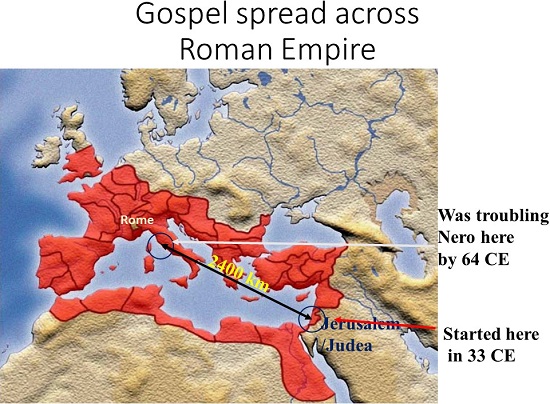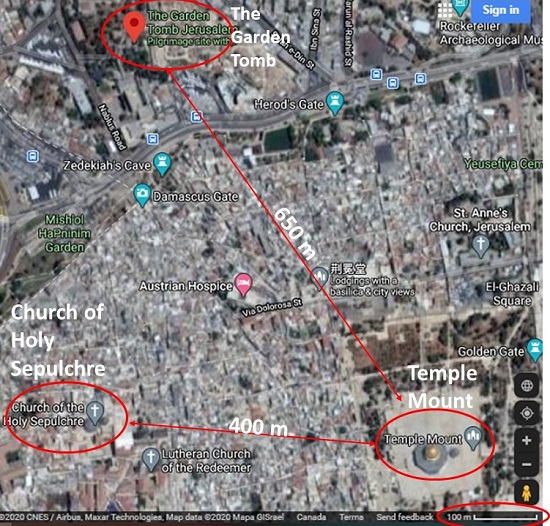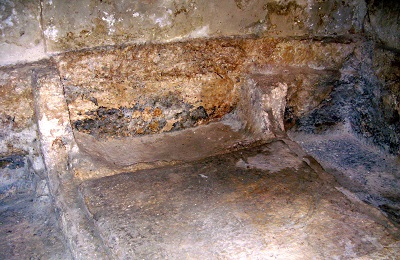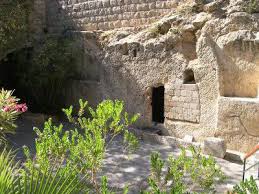The Puranas, Ramayana, and Mahabharata recount eight Chiranjeevis reputed to live until the end of time. If these mythologies are historical then these chiranjeevis are living on earth today, continuing to do so for thousands more years.
These eight Chiranjeevis are:
- Ved Vyasa, who composed the Mahabharata, born towards the end of Treta Yuga.
- Hanuman, one of the brahmachari, served Rama as explained in the Ramayana.
- Parashurama, the priest-warrior and sixth avatar of Vishnu, skilled in all combat.
- Vibhishana, Ravana’s brother, who surrendered to Rama before his battle with Ravana. Rama crowned Vibhishana King of Lanka after he killed Ravana. His longevity boon is to remain on the earth until the end of Maha Yuga.
- Ashwatthama, along with Kripa are the lone Kurukshetra War survivors still alive. Ashwatthama unlawfully killed some people so Krishna cursed him to wander the earth covered with incurable sores.
- Mahabali, (King Bali Chakravarthi) was a demon-King who existed somewhere around Kerala. He was so powerful that the gods felt threatened by him. So Vamana, Vishnu’s dwarf avatar, tricked him and sent him to the underworld.
- Kripa, guru of the Mahabharata princes, was one of three Kaurava survivors of the Kurukshetra War. Being such a wonderful guru, Krishna granted him immortality and he is alive today.
- Markandeya is an ancient rishi, mentioned in the Mahabharata, whom Shiva granted immortality because of his devotion to him.
Are the Chiranjeevis Historical?
Though revered as inspirational mythological figures, the Chiranjeevis’ acceptance in history is unsupported. No historian has recorded eye-witness encounters with them. Many of the places referred to in the mythologies cannot be located geographically. The written sources, such as the Mahabahrata, Ramayana and the Puranas, are difficult to verify historically. Scholars assess, for example, that the Ramayana was written in 5th century BCE. But the setting is in Treta yuga, 870000 years ago, hardly making it an eye-witness source for these events. Likewise the Mahabharata was composed sometime between 3rd BCE and 3rd CE centuries, while describing events probably in 8-9th century BCE. The authors did not witness the events they narrated since they had occurred hundreds of years beforehand.
Jesus’ resurrection historically examined.
What about the Bible’s claim of Jesus’ resurrection and new life? Is Jesus’ resurrection mythological like the Chiranjeevis, or is it historical?
This is worth investigating since it directly impacts us. We will all die, no matter how much money, education, health and other goals we achieve. If Jesus has defeated death then it gives a real hope in the face of our own approaching death. Here we look at some historical data giving evidence for his resurrection.
Historical Background to Jesus
That Jesus existed and died a public death that has altered the course of history is certain. Secular history records several references to Jesus and his impact on the world in his day. Let’s look at two.
Tacitus
The Roman governor-historian Tacitus made a fascinating reference to Jesus when recording how the Roman Emperor Nero executed 1st century Christians (in CE 65), whom Nero charged with burning Rome. Here is what Tacitus wrote:
‘Nero… punished with the most exquisite tortures, the persons commonly called Christians, who were hated for their enormities. Christus, the founder of the name, was put to death by Pontius Pilate, procurator of Judea in the reign of Tiberius; but the pernicious superstition, repressed for a time broke out again, not only through Judea, where the mischief originated, but through the city of Rome also’
Tacitus. Annals XV. 44. 112CE
Tacitus confirms that Jesus was:
- an historical person;
- executed by Pontius Pilate;
- In Judea/Jerusalem
- by 65 CE faith in Jesus had spread across the Mediterranean to Rome with such force that the emperor of Rome felt he had to deal with it.
Notice that Tacitus is saying these things as a hostile witness since he considers the movement Jesus started a ‘wicked superstition’. He opposes it, but does not deny its historicity.
Josephus
Josephus, a Jewish military leader/historian writing in the First Century, summarized Jewish history from their beginning up to his time. In so doing he covered the time and career of Jesus with these words:
‘At this time there was a wise man … Jesus. … good, and … virtuous. And many people from among the Jews and the other nations became his disciples. Pilate condemned Him to be crucified and to die. And those who had become his disciples did not abandon his discipleship. They reported that He had appeared to them three days after his crucifixion and that He was alive’
Josephus. 90 CE. Antiquities xviii. 33
Josephus confirms that:
- Jesus existed,
- He was a religious teacher,
- His disciples publicly proclaimed Jesus’ resurrection from the dead.
These historical glimpses show that the death of Christ was a well-known event and his disciples forced the issue of his resurrection onto the Greco-Roman world.

Historical Background – from the Bible
Luke, a historian provides further details as to how this faith advanced in the ancient world. Here is his excerpt from the Bible’s Book of Acts:
The priests and the captain of the temple guard and the Sadducees came up to Peter and John while they were speaking to the people. 2 They were greatly disturbed because the apostles were teaching the people, proclaiming in Jesus the resurrection of the dead. 3 They seized Peter and John and, because it was evening, they put them in jail until the next day. 4 But many who heard the message believed; so the number of men who believed grew to about five thousand.
5 The next day the rulers, the elders and the teachers of the law met in Jerusalem. 6 Annas the high priest was there, and so were Caiaphas, John, Alexander and others of the high priest’s family. 7 They had Peter and John brought before them and began to question them: “By what power or what name did you do this?”
8 Then Peter, filled with the Holy Spirit, said to them: “Rulers and elders of the people! 9 If we are being called to account today for an act of kindness shown to a man who was lame and are being asked how he was healed, 10 then know this, you and all the people of Israel: It is by the name of Jesus Christ of Nazareth, whom you crucified but whom God raised from the dead, that this man stands before you healed. 11 Jesus is
“‘the stone you builders rejected,
which has become the cornerstone.’[a]
12 Salvation is found in no one else, for there is no other name under heaven given to mankind by which we must be saved.”
13 When they saw the courage of Peter and John and realized that they were unschooled, ordinary men, they were astonished and they took note that these men had been with Jesus. 14 But since they could see the man who had been healed standing there with them, there was nothing they could say. 15 So they ordered them to withdraw from the Sanhedrin and then conferred together. 16 “What are we going to do with these men?” they asked. “Everyone living in Jerusalem knows they have performed a notable sign, and we cannot deny it. 17 But to stop this thing from spreading any further among the people, we must warn them to speak no longer to anyone in this name.”
Acts 4:1-17 (ca 63 CE)
Further opposition from Authorities
Then the high priest and all his associates, who were members of the party of the Sadducees, were filled with jealousy. 18 They arrested the apostles and put them in the public jail. 19 But during the night an angel of the Lord opened the doors of the jail and brought them out. 20 “Go, stand in the temple courts,” he said, “and tell the people all about this new life.”
21 At daybreak they entered the temple courts, as they had been told, and began to teach the people.
When the high priest and his associates arrived, they called together the Sanhedrin—the full assembly of the elders of Israel—and sent to the jail for the apostles. 22 But on arriving at the jail, the officers did not find them there. So they went back and reported, 23 “We found the jail securely locked, with the guards standing at the doors; but when we opened them, we found no one inside.” 24 On hearing this report, the captain of the temple guard and the chief priests were at a loss, wondering what this might lead to.
25 Then someone came and said, “Look! The men you put in jail are standing in the temple courts teaching the people.” 26 At that, the captain went with his officers and brought the apostles. They did not use force, because they feared that the people would stone them.
27 The apostles were brought in and made to appear before the Sanhedrin to be questioned by the high priest. 28 “We gave you strict orders not to teach in this name,” he said. “Yet you have filled Jerusalem with your teaching and are determined to make us guilty of this man’s blood.”
29 Peter and the other apostles replied: “We must obey God rather than human beings! 30 The God of our ancestors raised Jesus from the dead—whom you killed by hanging him on a cross. 31 God exalted him to his own right hand as Prince and Savior that he might bring Israel to repentance and forgive their sins. 32 We are witnesses of these things, and so is the Holy Spirit, whom God has given to those who obey him.”
33 When they heard this, they were furious and wanted to put them to death. 34 But a Pharisee named Gamaliel, a teacher of the law, who was honored by all the people, stood up in the Sanhedrin and ordered that the men be put outside for a little while. 35 Then he addressed the Sanhedrin: “Men of Israel, consider carefully what you intend to do to these men. 36 Some time ago Theudas appeared, claiming to be somebody, and about four hundred men rallied to him. He was killed, all his followers were dispersed, and it all came to nothing. 37 After him, Judas the Galilean appeared in the days of the census and led a band of people in revolt. He too was killed, and all his followers were scattered. 38 Therefore, in the present case I advise you: Leave these men alone! Let them go! For if their purpose or activity is of human origin, it will fail. 39 But if it is from God, you will not be able to stop these men; you will only find yourselves fighting against God.”
40 His speech persuaded them. They called the apostles in and had them flogged. Then they ordered them not to speak in the name of Jesus, and let them go.
41 The apostles left the Sanhedrin, rejoicing because they had been counted worthy of suffering disgrace for the Name.
Acts 5:17-41
Observe how the Jewish leaders went to great lengths to stop this new belief. These initial controversies occurred in Jerusalem, the same city where only a few weeks earlier they had publicly executed Jesus.
From this historical data we can investigate the resurrection by weighing alternatives and seeing what makes sense.
Jesus’ body and the Tomb
We have only two alternatives concerning the tomb of the dead Christ. Either the tomb was empty on that Easter Sunday morning or it contained his body. There are no other options.
Jewish Leaders Opposed to the Resurrection Message did not Refute it with a Body
The tomb where Jesus’ body lay was not far from the Temple where his disciples were shouting to the crowds that he had risen from the dead. It should have been easy for the Jewish leaders to discredit their resurrection message simply by showing the body in the tomb. History shows that the resurrection message (which is dis-proven with a body still in the tomb) began near the tomb itself, where the evidence was accessible to everyone. Since the Jewish leaders did not refute their message by showing a body there was no body in the tomb to show.
Thousands believed the resurrection message in Jerusalem
Thousands converted to believe in the physical resurrection of Jesus in Jerusalem at this time. If you had been one of those in the crowds listening to Peter, wondering if his message was true, would you not have at least taken a lunch break to go to the tomb and take a look to see if there was still a body there? If the body of Jesus was still in the tomb no one would have believed the message of the apostles. But history records that they gained thousands of followers starting in Jerusalem. That would have been impossible with a body still around in Jerusalem. Jesus’ body remaining in the tomb leads to absurdities. It makes no sense.

Did the disciples steal the body?
So what happened to the body? The most contemplated explanation has been that the disciples themselves stole the body from the tomb, hid it somewhere and were then able to mislead others.
Assume that they successfully managed this and then they started a religious faith based on their deception. But looking back to the account from both Acts and Josephus we note that the controversy was “the apostles were teaching the people and proclaiming in Jesus the resurrection of the dead”. This theme is everywhere in their writings. Notice how Paul, another apostle, rates the importance of Christ’s resurrection:
For what I received I passed on to you as of first importance: that Christ died for our sins according to the Scriptures, 4 that he was buried, that he was raised on the third day according to the Scriptures, 5 and that he appeared to Cephas, and then to the Twelve. 6 After that, he appeared to more than five hundred of the brothers and sisters at the same time, most of whom are still living, though some have fallen asleep. 7 Then he appeared to James, then to all the apostles, 8 and last of all he appeared to me also, as to one abnormally born.
9 For I am the least of the apostles and do not even deserve to be called an apostle, because I persecuted the church of God. 10 But by the grace of God I am what I am, and his grace to me was not without effect. No, I worked harder than all of them—yet not I, but the grace of God that was with me. 11 Whether, then, it is I or they, this is what we preach, and this is what you believed.
The Resurrection of the Dead
12 But if it is preached that Christ has been raised from the dead, how can some of you say that there is no resurrection of the dead? 13 If there is no resurrection of the dead, then not even Christ has been raised. 14 And if Christ has not been raised, our preaching is useless and so is your faith. 15 More than that, we are then found to be false witnesses about God, for we have testified about God that he raised Christ from the dead. But he did not raise him if in fact the dead are not raised. 16 For if the dead are not raised, then Christ has not been raised either. 17 And if Christ has not been raised, your faith is futile; you are still in your sins. 18 Then those also who have fallen asleep in Christ are lost. 19 If only for this life we have hope in Christ, we are of all people most to be pitied.
1 Corinthians 15:3-19 (57 CE)
And as for us, why do we endanger ourselves every hour? 31 I face death every day—yes, just as surely as I boast about you in Christ Jesus our Lord. 32 If I fought wild beasts in Ephesus with no more than human hopes, what have I gained? If the dead are not raised,
“Let us eat and drink,
1 Corinthians 15:30-32
for tomorrow we die.”
Why die for what you know to be a lie?
Clearly, the disciples placed Christ’s resurrection at the center of their message. Assume that this was really false – that these disciples had really stolen the body so the counter-evidence to their message could not expose them. They may then have successfully fooled the world, but they themselves would have known that what they were preaching, writing and creating great upheaval for was false. Yet they gave their lives (literally) for this mission. Why would they do it – if they knew it was false?
People give their lives to causes because they believe in the cause for which they fight or because they expect some benefit from the cause. If the disciples had stolen the body and hid it, they of all people would know that the resurrection was not true. Consider from their own words what price the disciples paid for the spreading of their message. Ask yourself if you would pay such a personal price for something that you knew to be false:
We are hard pressed on every side, but not crushed; perplexed, but not in despair; 9 persecuted, but not abandoned; struck down, but not destroyed.
2 Corinthians 4:8-9
Rather, as servants of God we commend ourselves in every way: in great endurance; in troubles, hardships and distresses; 5 in beatings, imprisonments and riots; in hard work, sleepless nights and hunger;
2 Corinthians 6:4-5
Five times I received from the Jews the forty lashes minus one. 25 Three times I was beaten with rods, once I was pelted with stones, three times I was shipwrecked, I spent a night and a day in the open sea, 26 I have been constantly on the move. I have been in danger from rivers, in danger from bandits, in danger from my fellow Jews, in danger from Gentiles; in danger in the city, in danger in the country, in danger at sea; and in danger from false believers. 27 I have labored and toiled and have often gone without sleep; I have known hunger and thirst and have often gone without food; I have been cold and naked.
2 Corinthians 11:24-27
The Apostles’ Steadfast Courage
If you consider the unwavering heroism throughout their lives, the more incredible it seems that they did not sincerely believe their own message. But if they believed it they certainly could not have stolen and disposed of Christ’s body. Endless days of poverty, beatings, imprisonment, powerful opposition and finally execution (all Apostles except John were eventually executed for their message) provided daily opportunities to review their motives. Yet not one of the Apostles who claimed to have seen Jesus risen ever recanted. They met all opposition with unflinching courage.
This contrasts with their enemies’ silence – Jewish and Roman. These hostile witnesses never attempted to tell the ‘real’ story, or show how the disciples were wrong. The Apostles presented their testimony in public forums and synagogue, in the very teeth of opposition, to hostile cross-examiners who would have refuted their case had the facts been otherwise.


The unwavering boldness of the disciples and the silence of their hostile authorities make a powerful case that Jesus rose in real history. We can put our trust in his resurrection.